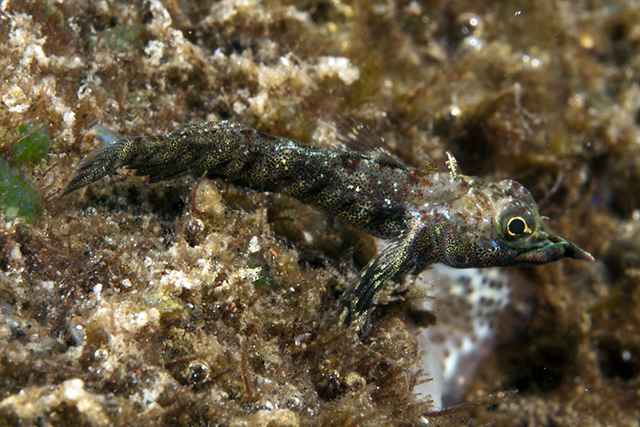| Tripterygiidae (Triplefin blennies), subfamily: Tripterygiinae |
| 4 cm TL (male/unsexed) |
|
demersal; marine; depth range 0 - 6 m |
| Western Pacific: Widespread in the area, from the Philippines, Viet Nam, Indonesia (Borneo) to the Solomon Islands (Ref. 13227). Recently collected from Fiji and Tonga (Williams pers. comm.). New locality records from Thailand and the Andaman Sea (Ref. 27223). |
|
Dorsal spines (total): 17-18; Dorsal soft rays (total): 10-11; Anal spines: 1-1; Anal soft rays: 20-20; Vertebrae: 37-37. Trunk without longitudinal stripes; symphyseal dentary pores 1; upper lip with proboscis-like extension on males, head with horizontal yellowish or bluish white line from the upper rim of upper jaw to opercle (Ref. 94457). Males are easily recognized by the extended nose and change color to display to females with an electric blue line below the eye, shaded by black below (Ref. 48636). Also Ref. 94101. |
| Adults inhabit clear coastal reefs with algae covered rocky boulders, usually in small groups (Ref. 48636). They occur in very shallow depths on rock surfaces and under ledges (Ref. 48636). Eggs are hemispherical and covered with numerous sticky threads that anchor them in the algae on the nesting sites (Ref. 240). Larvae are planktonic which occur primarily in shallow, nearshore waters (Ref. 94114). Minimum depth of 0 m reported from Ref. 58018. |
|
Least Concern (LC); Date assessed: 06 May 2010 Ref. (130435)
|
| harmless |
Source and more info: www.fishbase.org. For personal, classroom, and other internal use only. Not for publication.

